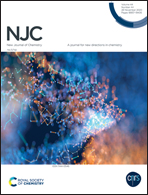Facile preparation of a superamphiphobic fabric coating with hierarchical TiO2 particles†
Abstract
Functional superamphiphobic coatings have attracted great attention due to their promising applications in oil transportation and anti-contamination. Herein, a superamphiphobic cotton fabric with excellent mechanical stability and antifouling property was constructed by coating flower-like TiO2 nanoparticles onto the cotton fabric surface by a facile spraying method and further modification with 1H,1H,2H,2H-perfluorooctyltrichlorosilane (FOTS). The synthetic mechanism, surface structure, chemical composition of the F-TiO2 particles were investigated by scanning electron microscopy (SEM), energy-dispersive spectroscopy (EDS), X-ray photoelectron spectroscopy (XPS), respectively. The prepared cotton fabrics exhibited high liquid repellency to water, rapeseed oil, glycerol, 1,2-dichloroethane and n-hexadecane with a lower surface tension, showing a contact angle of 159°, 157°, 155°, 153° and152°respectively. Furthermore, the F-TiO2-coated fabrics displayed excellent self-cleaning and self-healing properties. Moreover, the great mechanical stability of F-TiO2 fabrics was confirmed after sand paper abrasion and water-impacting tests. The result indicates that F-TiO2 coatings with versatile abilities exhibited promising potential to achieve numerous applications.



 Please wait while we load your content...
Please wait while we load your content...